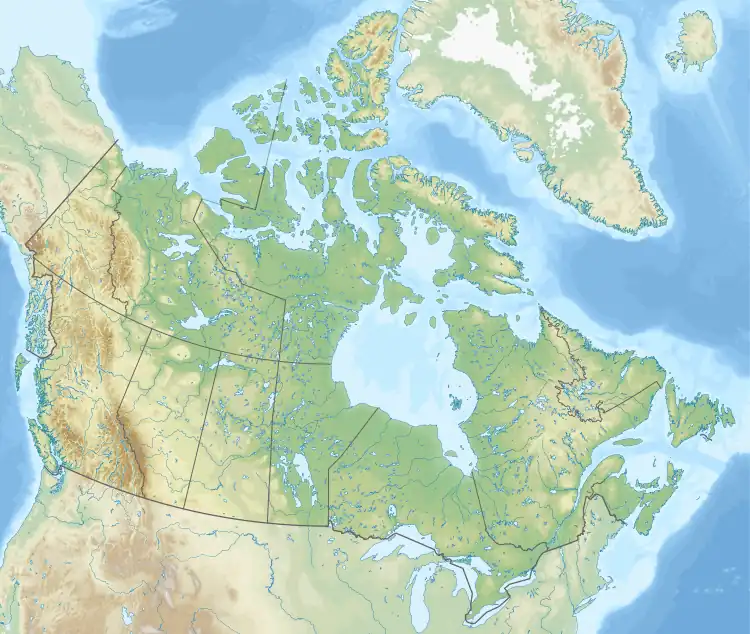| Borsato Formation | |
|---|---|
| Stratigraphic range: Frasnian ~ | |
| Type | Formation |
| Unit of | Fairholme Group |
| Underlies | Mount Hawk Formation or Southesk Formation |
| Overlies | Hollebeke Formation |
| Thickness | Up to about 60 m (200 ft)[1] |
| Lithology | |
| Primary | Dolomite |
| Location | |
| Coordinates | 49°23′50″N 114°34′53″W / 49.39722°N 114.58139°W |
| Region | |
| Country | |
| Type section | |
| Named for | Mount Borsato |
| Named by | R.A. Price |
| Year defined | 1965[2] |
 Borsato Formation (Canada)  Borsato Formation (Alberta) | |
The Borsato Formation is a stratigraphic unit of Late Devonian (Frasnian) age. It is present on the western edge of the Western Canada Sedimentary Basin in the southern Rocky Mountains of Alberta and British Columbia. It consists of dolomite and was named for Mount Borsato in the Flathead Range near North Kootenay Pass by R.A. Price in 1965.[1][2]
The formation is fossiliferous and includes remains of stromatoporoids and tabulate corals.[1]
Thickness and lithology
The Borsato Formation is 20 to 60 metres (66 to 197 ft) thick. It was deposited in a reefal environment and consists of dark coloured, medium- to thick-bedded, medium- to coarse-crystalline dolomite.[1]
Distribution and relationship to other units
The Borsato Formation is present in the Rocky Mountains of southeastern British Columbia and southwestern Alberta, west of the Lewis Thrust Fault and south of about 49° 45". It overlies the Hollebeke Formation, and is overlain by the Mount Hawk Formation or the Peechee Member of the Southesk Formation, depending on the location.[1][3]
References
- 1 2 3 4 5 Glass, D.J. (editor) 1997. Lexicon of Canadian Stratigraphy, vol. 4, Western Canada including eastern British Columbia, Alberta, Saskatchewan and southern Manitoba, p. 720-721. Canadian Society of Petroleum Geologists, Calgary, 1423 p. on CD-ROM. ISBN 0-920230-23-7
- 1 2 Price, R.A., 1965. Flathead map-area, British Columbia and Alberta. Geological Survey of Canada, Memoir 336
- ↑ Alberta Geological Survey. "Alberta Table of Formations, May 2019" (PDF). Alberta Energy Regulator. Retrieved 24 March 2020.